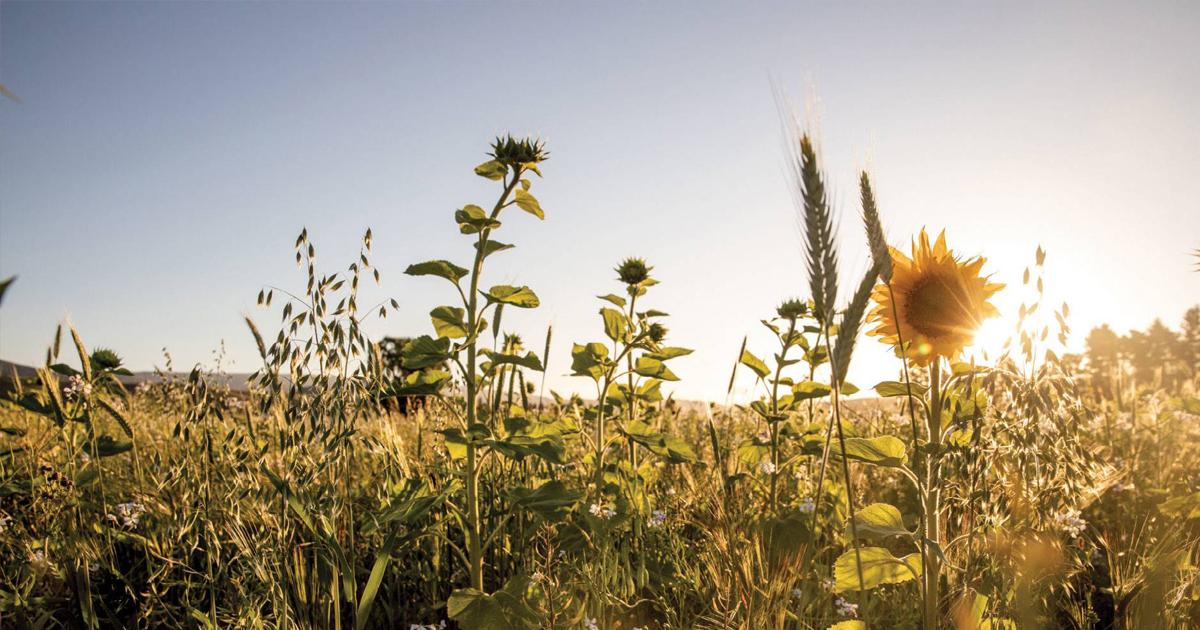Regenerative agriculture is supposed to save us from climate change, freshwater pollution, soil erosion, drought, the invertebrate apocalypse and poor mental health. Does it live up to the hype?
The paddock is a waist-high riot of yellow sunflowers, blue vetch, purple lupins and a dozen shades of green. Small flocks of birds whirr away at our approach, and a pair of honking paradise shelducks fly overhead, black and white against the dusty Dunstan Range. Four-year-old Alfie Rutherford emerges from a waving sea of flowers taller than he is. “Look, Daddy!” He has some sunflower seeds in his hand. “Can we eat them yet?”
“They’re still a bit soft, a bit cheesy,” says Tim Rutherford. “They need to harden up a wee bit.”
Summer is sunflower season here on the Rutherfords’ high-country farm in Tarras, Central Otago. Cattle and fattening lambs graze on the flat lower paddocks beside the Lindis River, while up in the high country, 4000 merinos run with the rabbits among the rocky schist outcrops and the matagouri.
Tim’s family has farmed these 5500 hectares for four generations. In 1909, Tim’s great-great-grandfather bought half the property for his daughter and son-in-law, then was balloted the rest. The son-in-law died relatively young (from a heart attack while plucking a turkey, according to family lore) and the farm was passed to Tim’s grandfather, then his parents. Fifteen years ago, in the midst of a punishing drought, Tim returned to help his father, Alastair, run it.
“I could see if I didn’t come back then I wouldn’t have anything to come back to,” Tim says.

